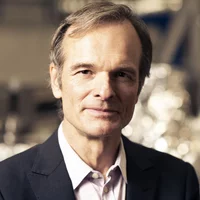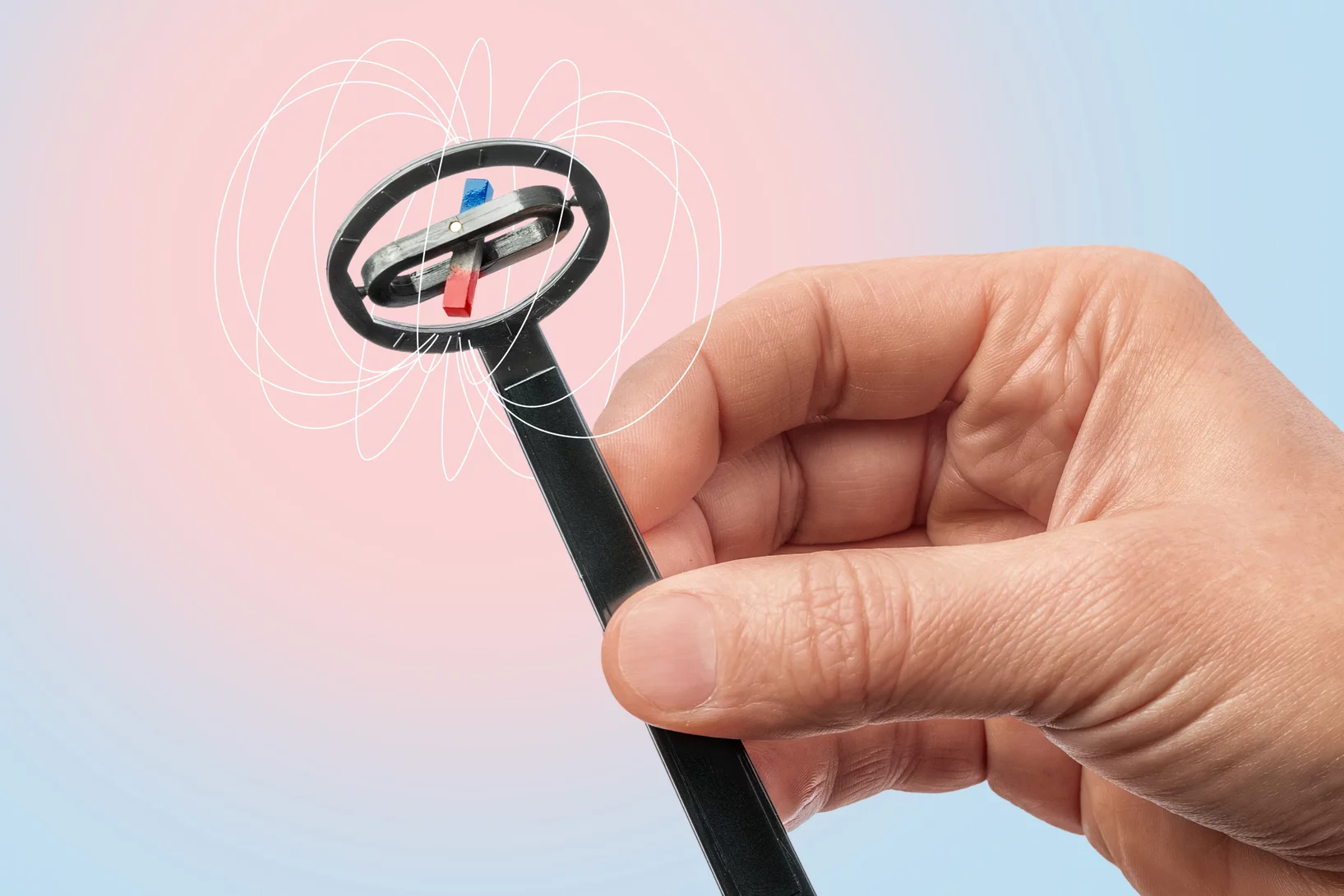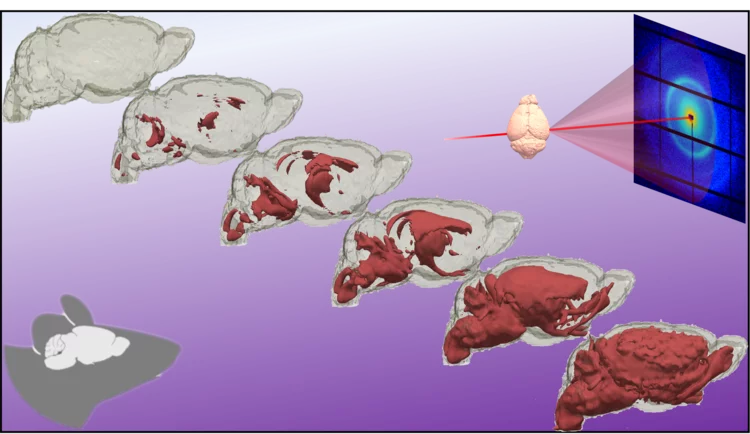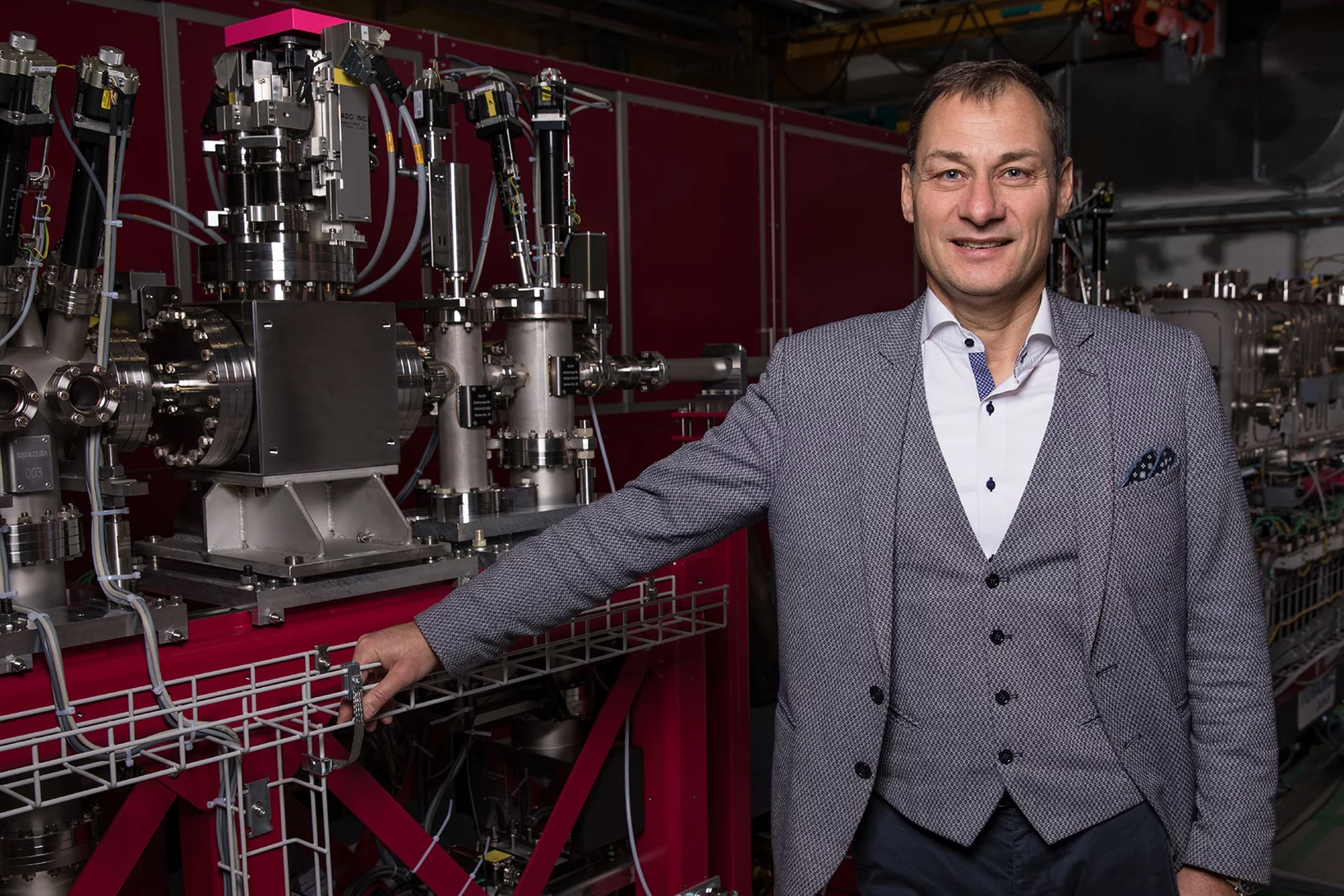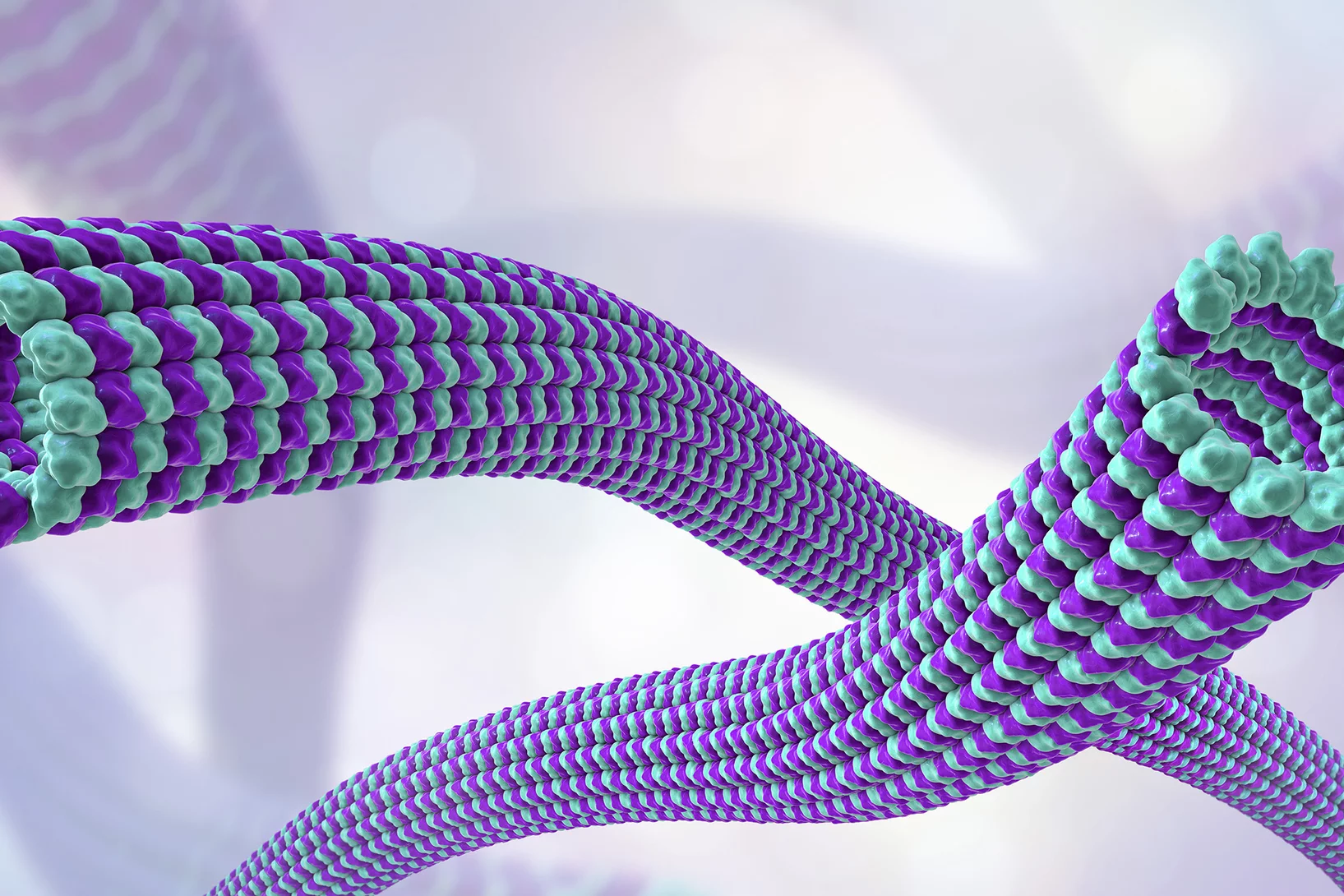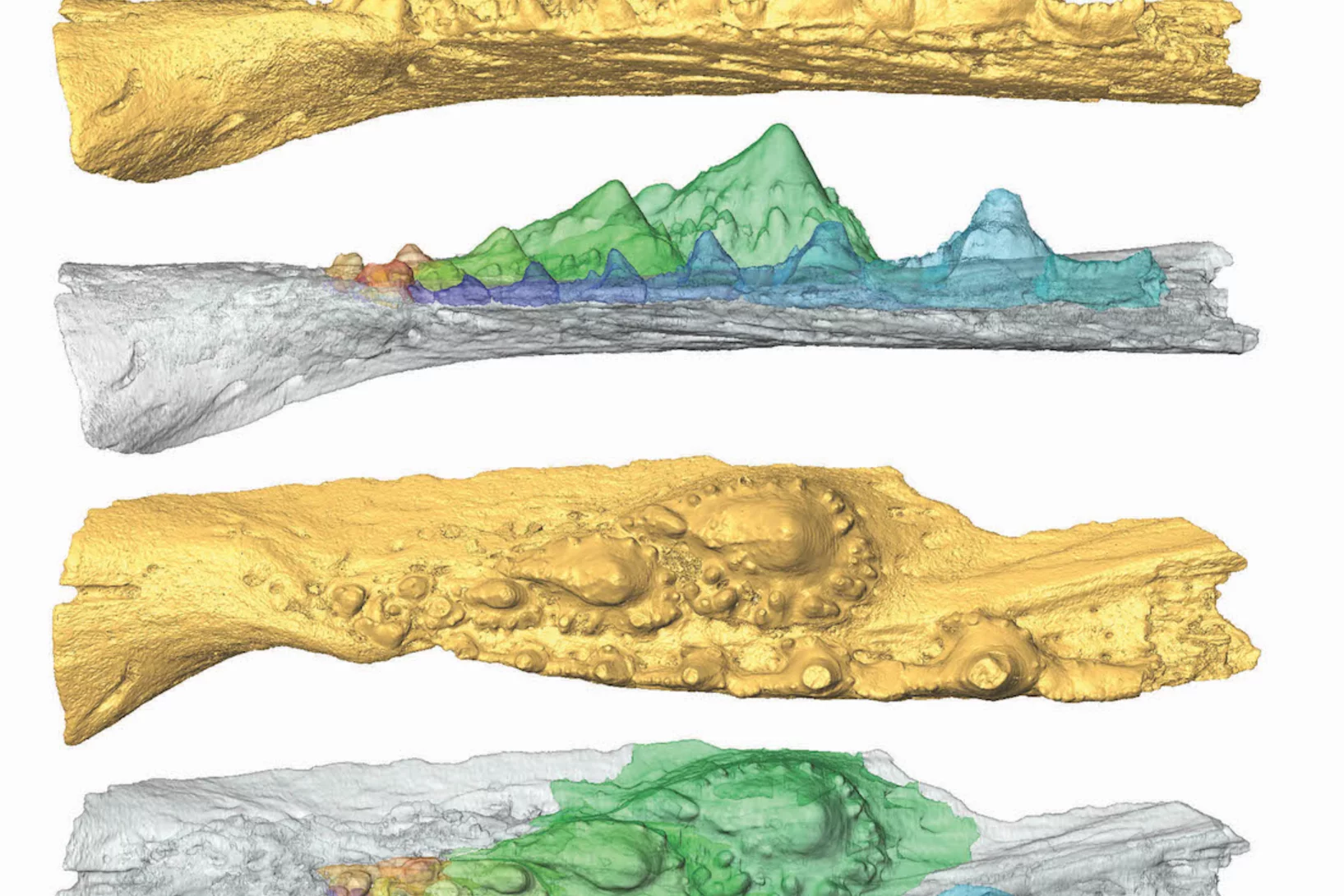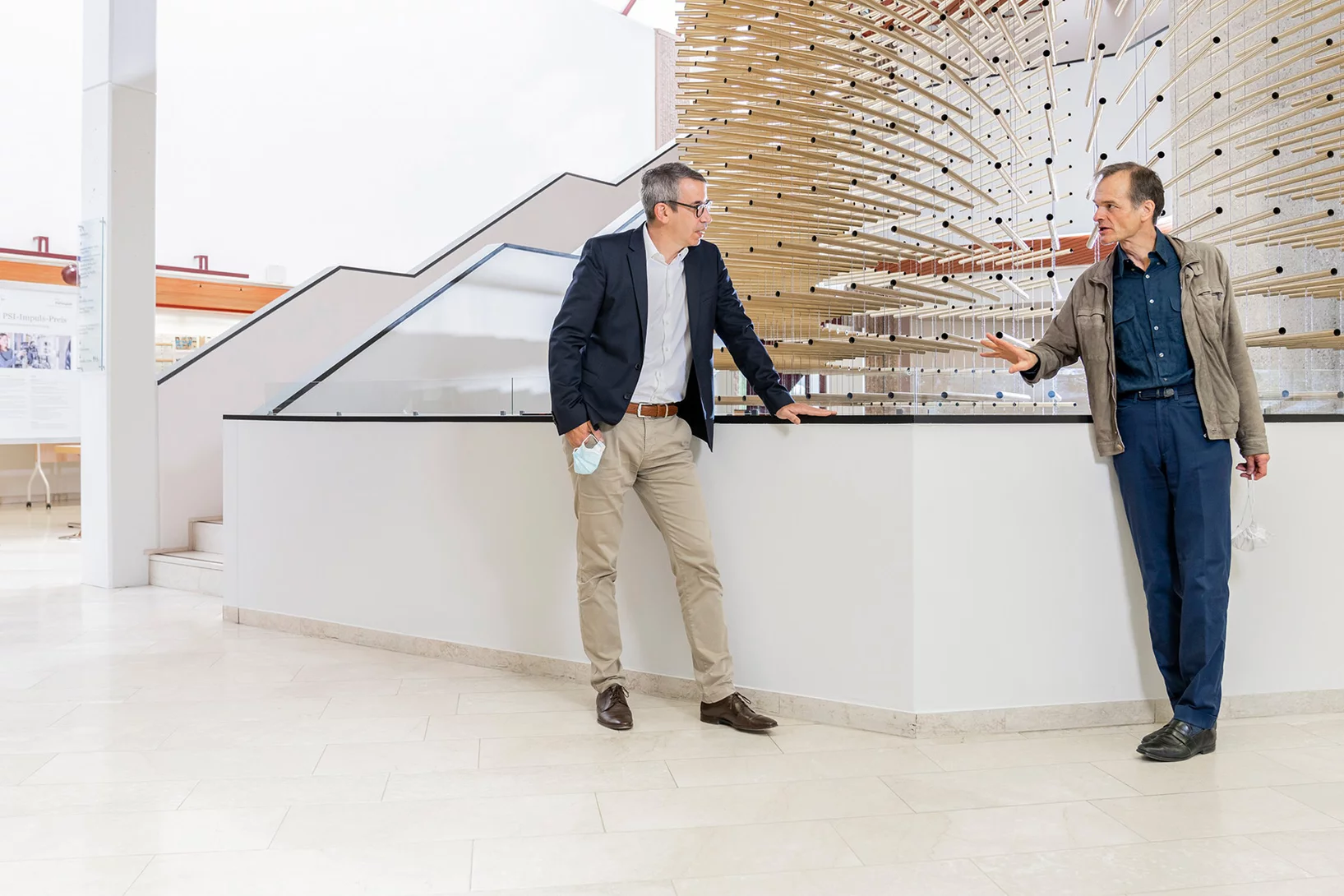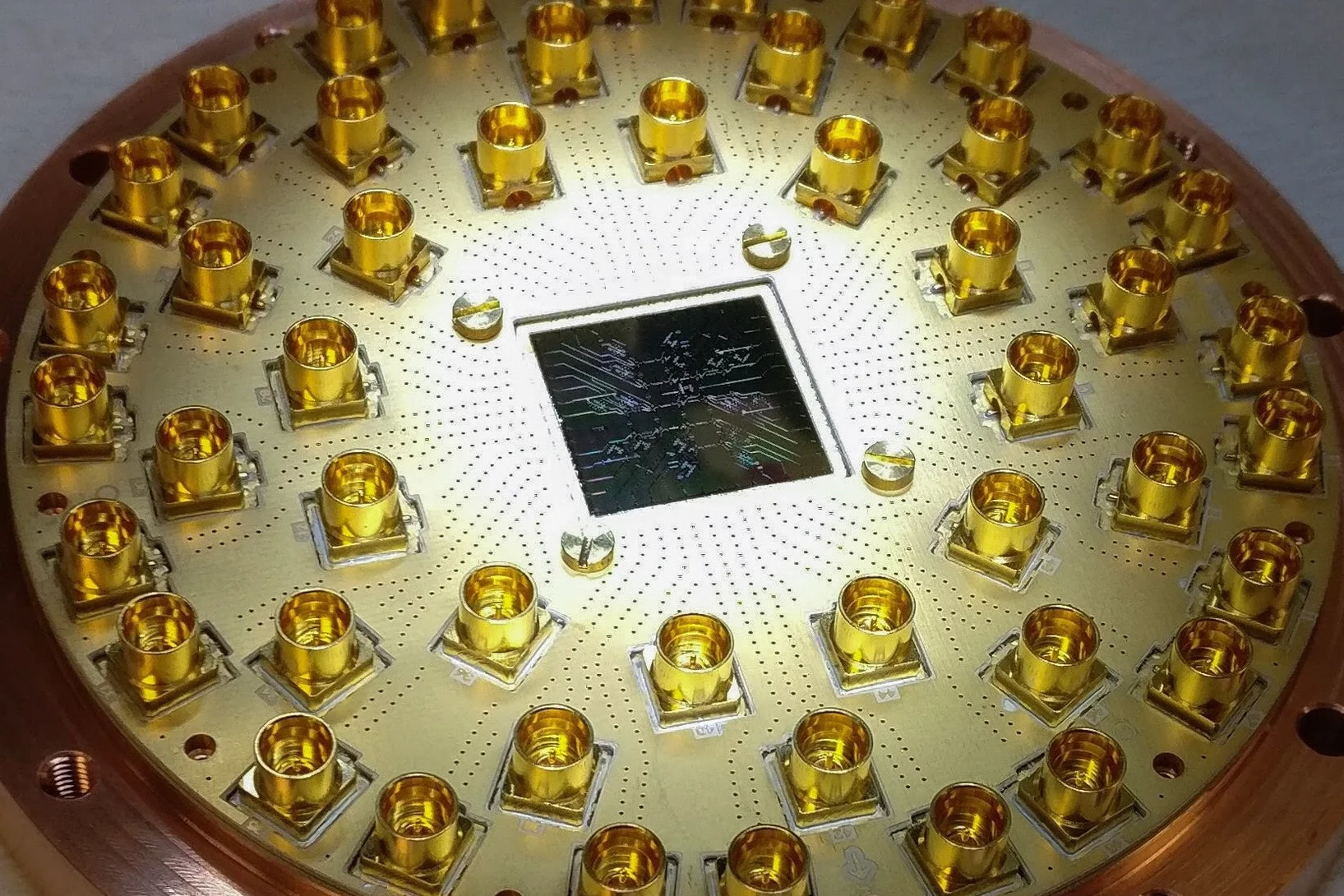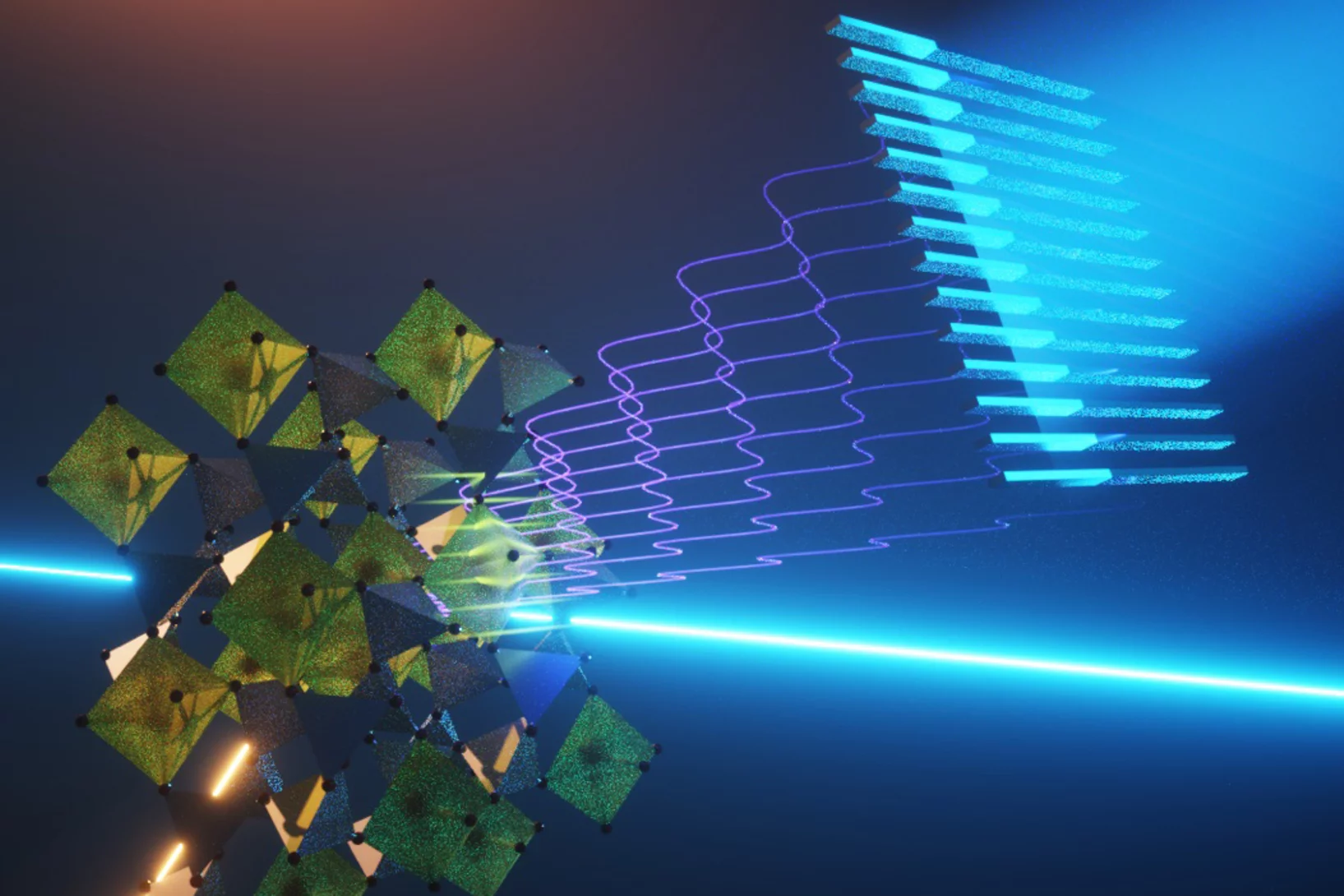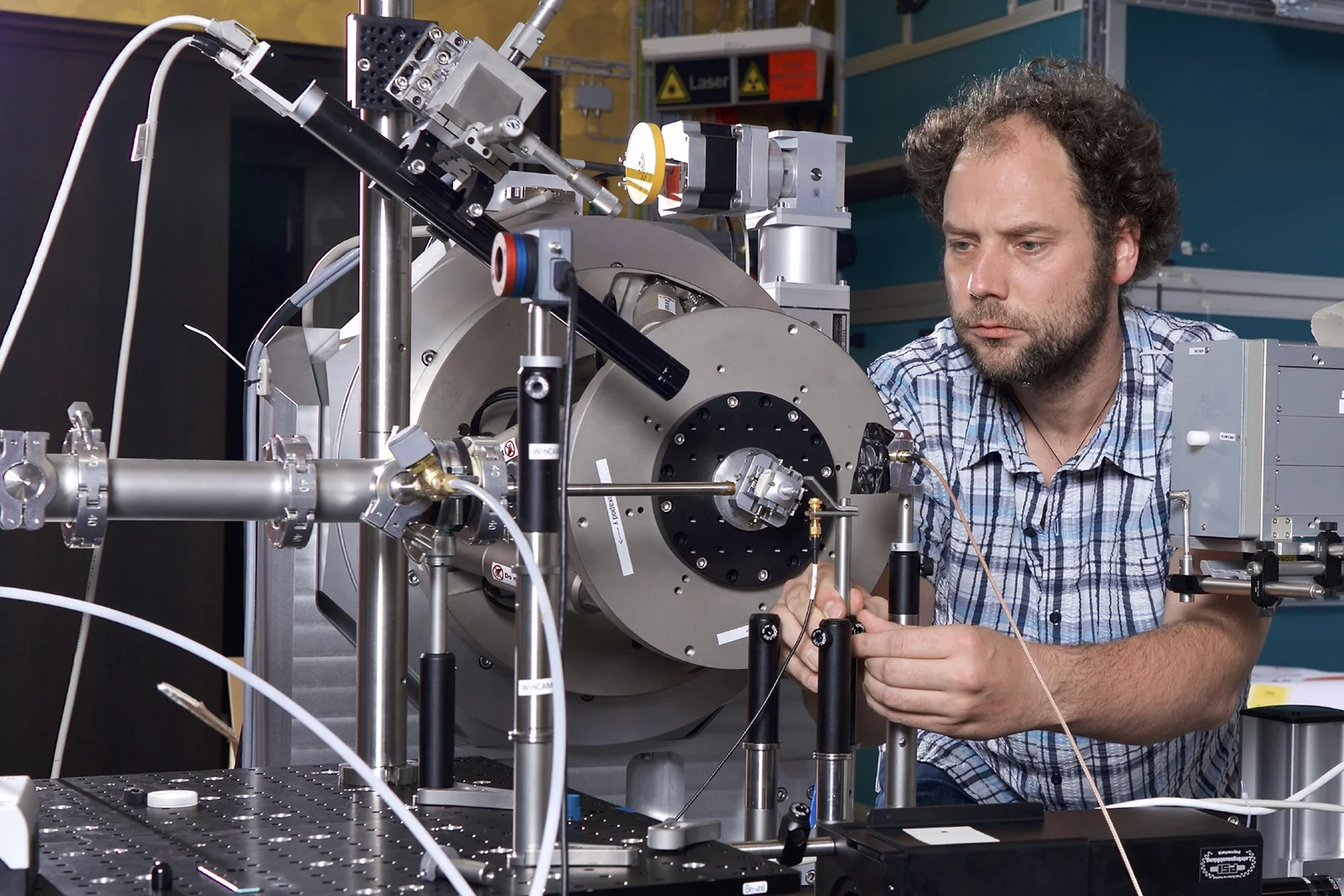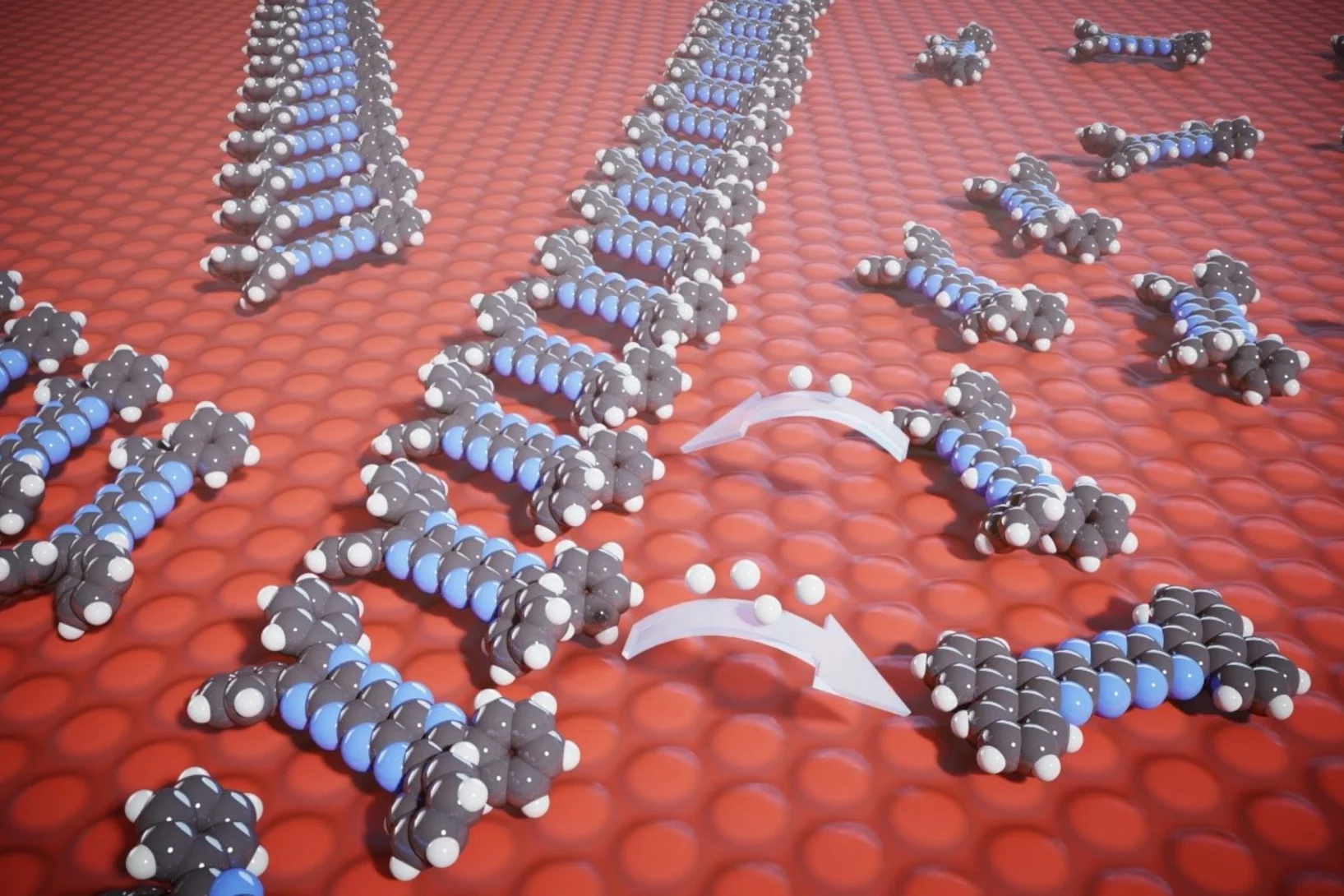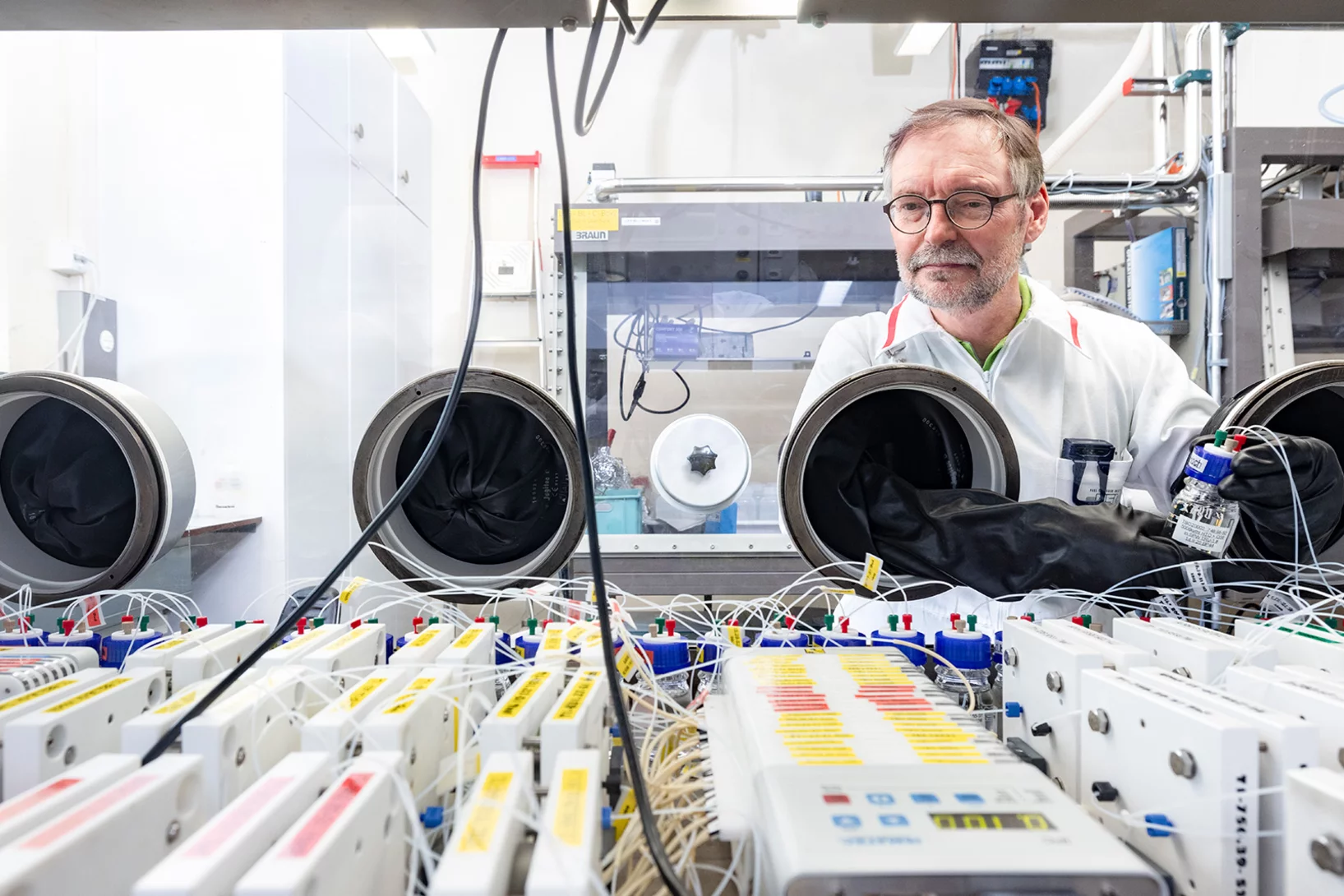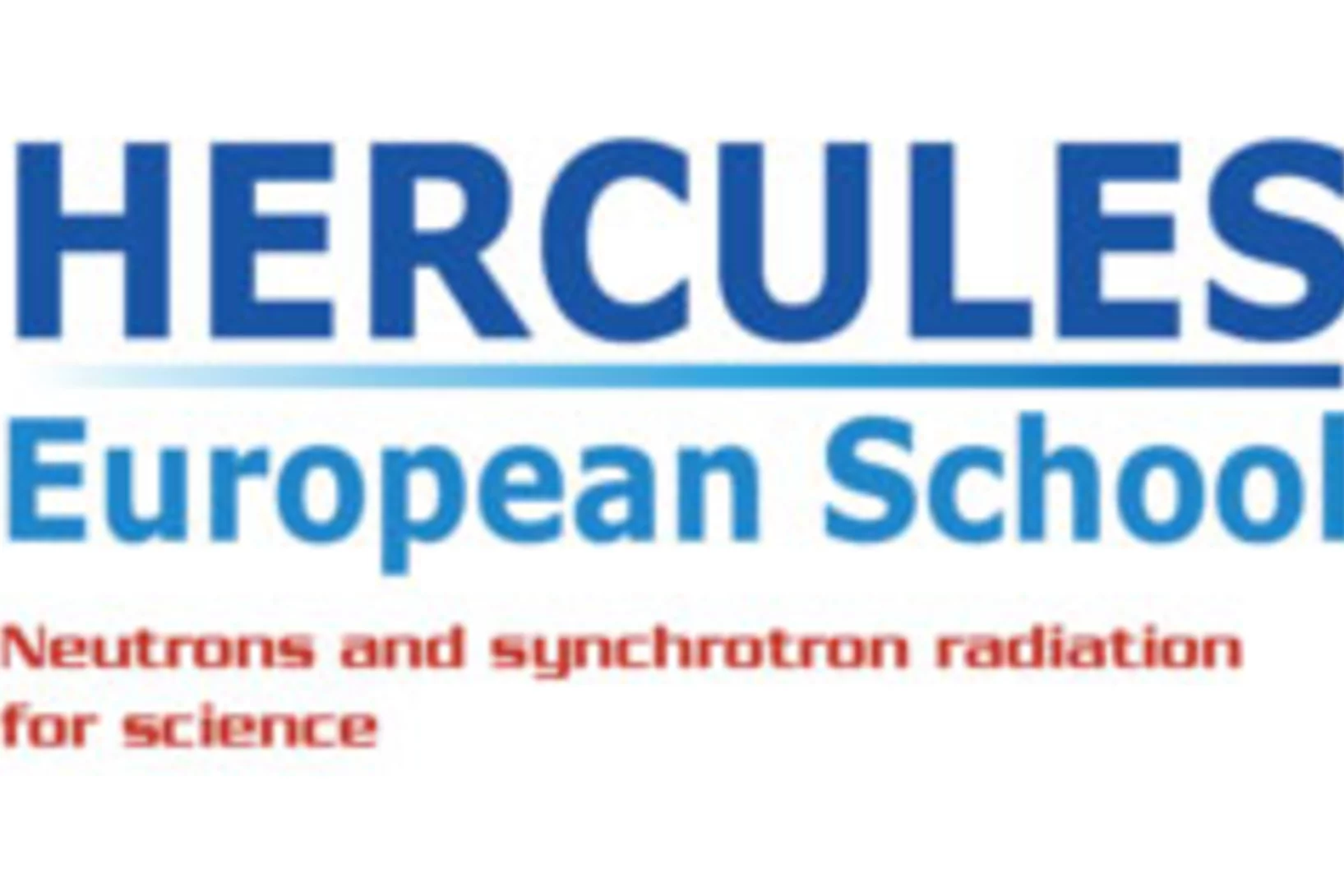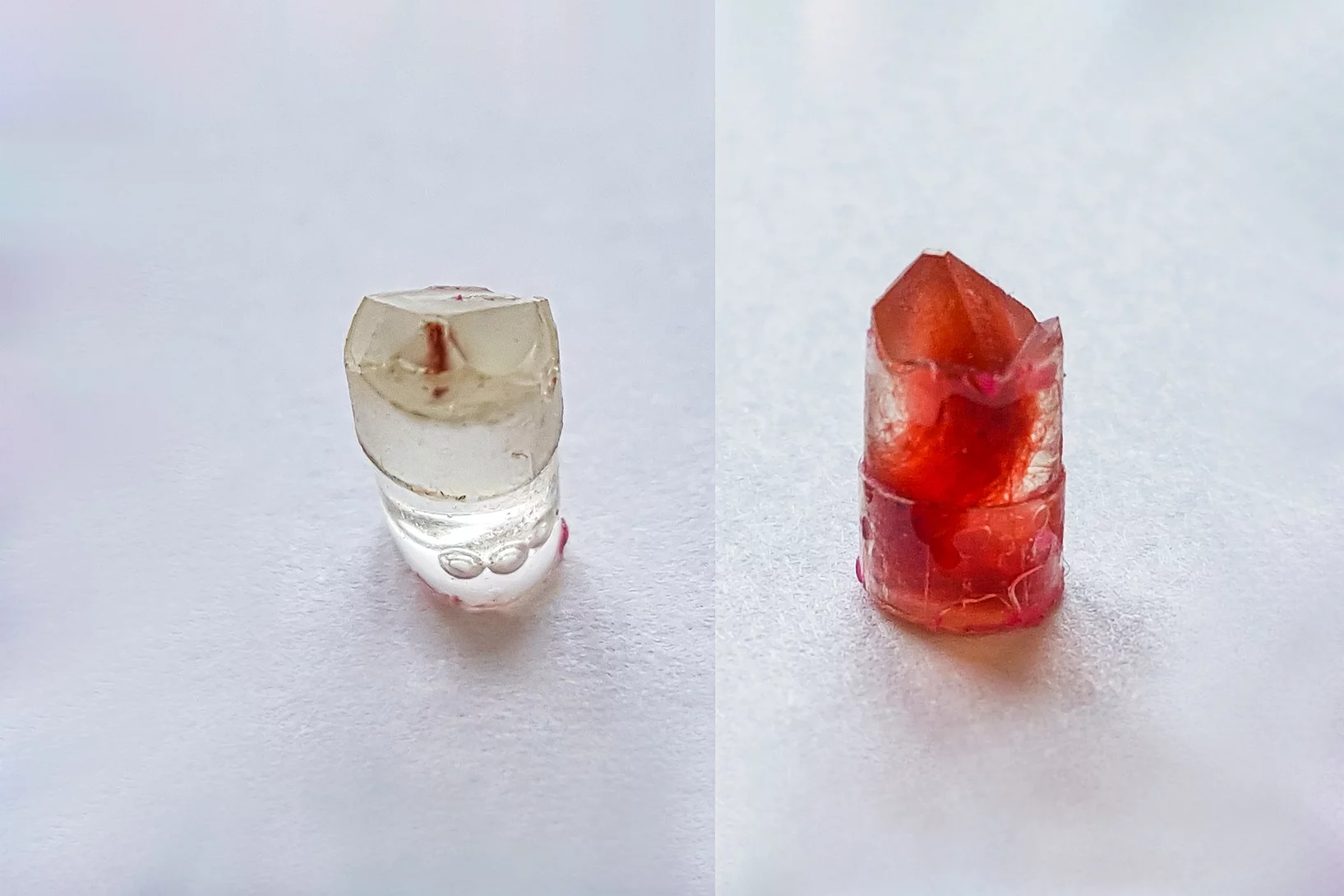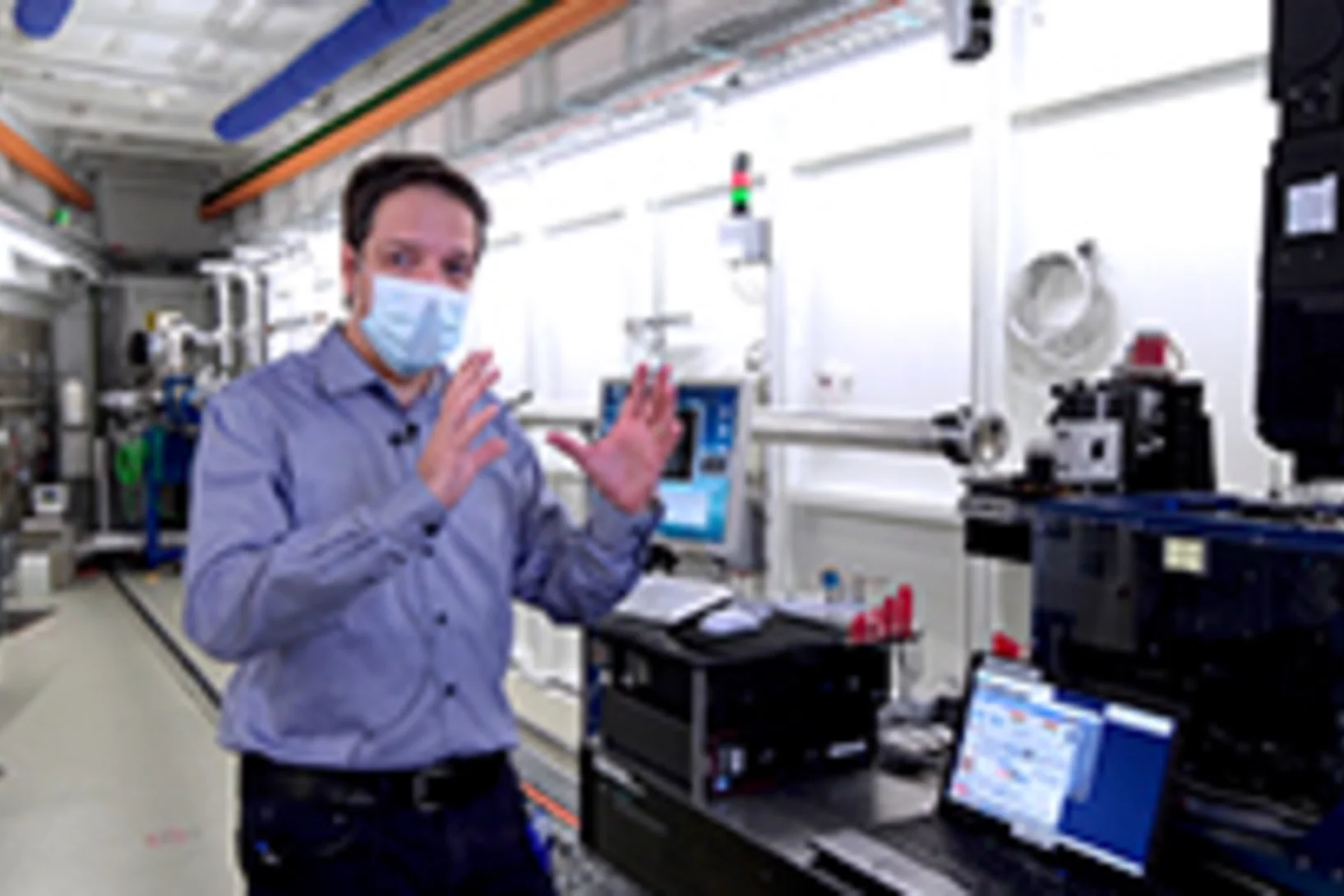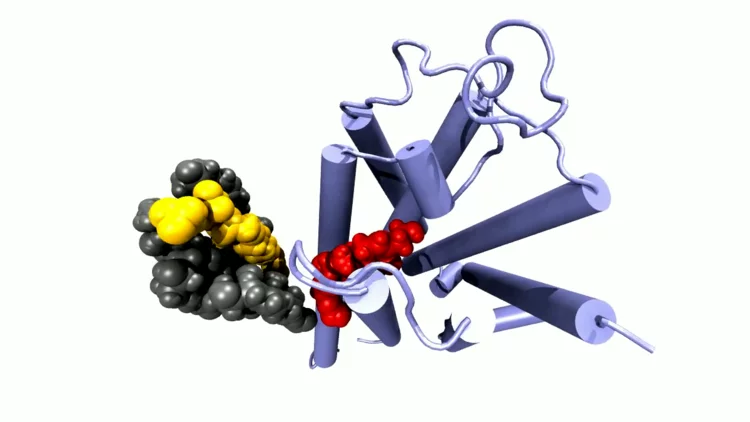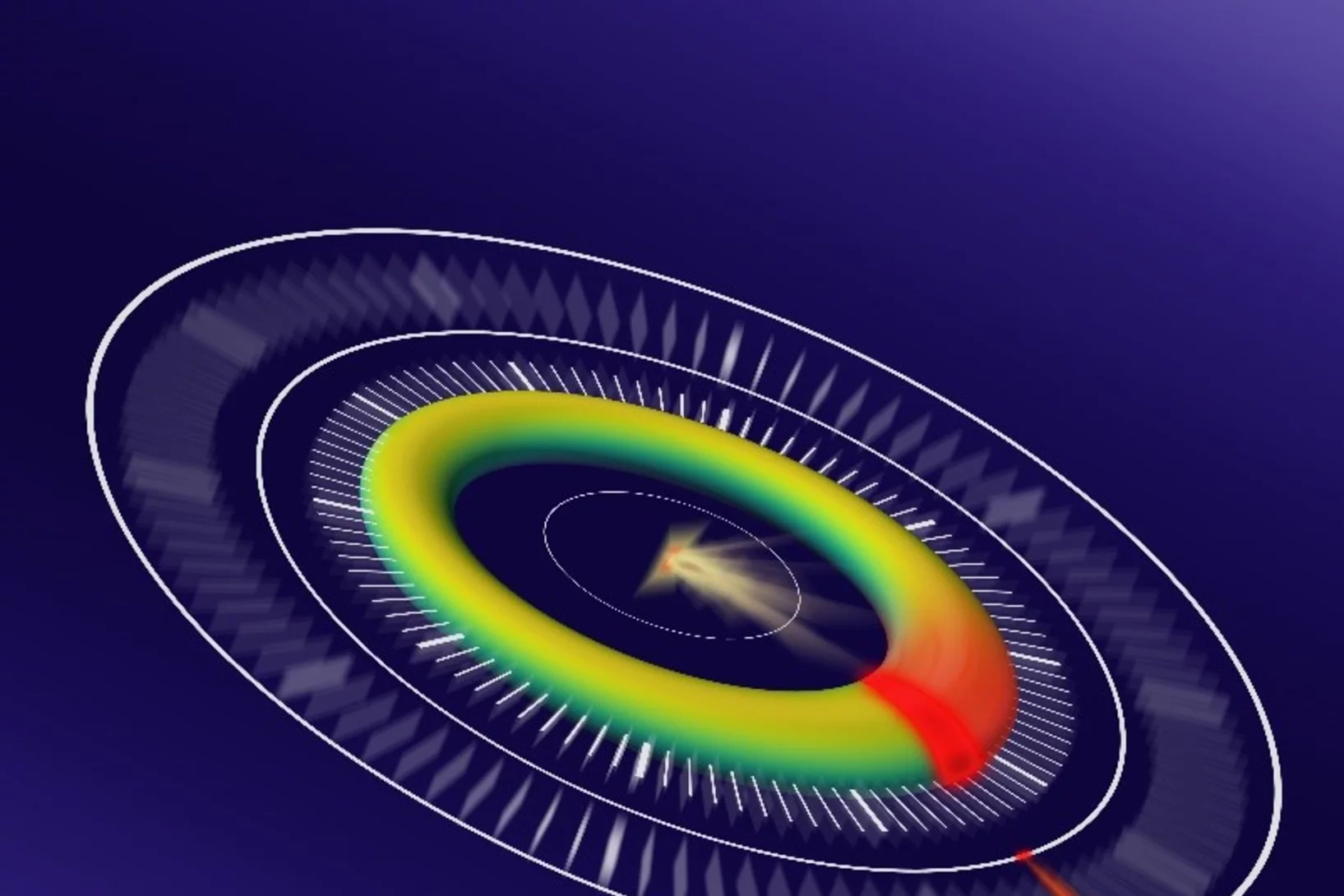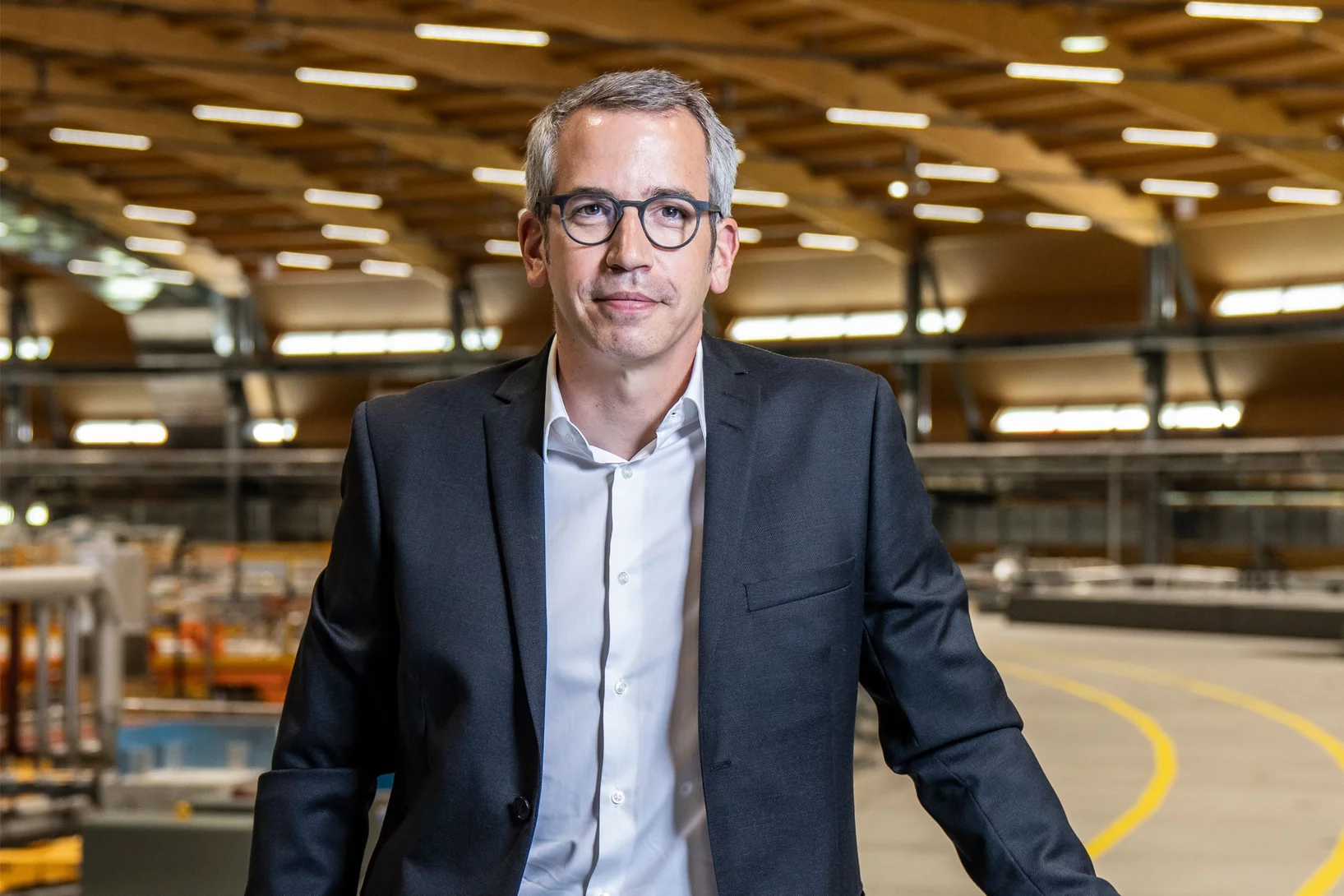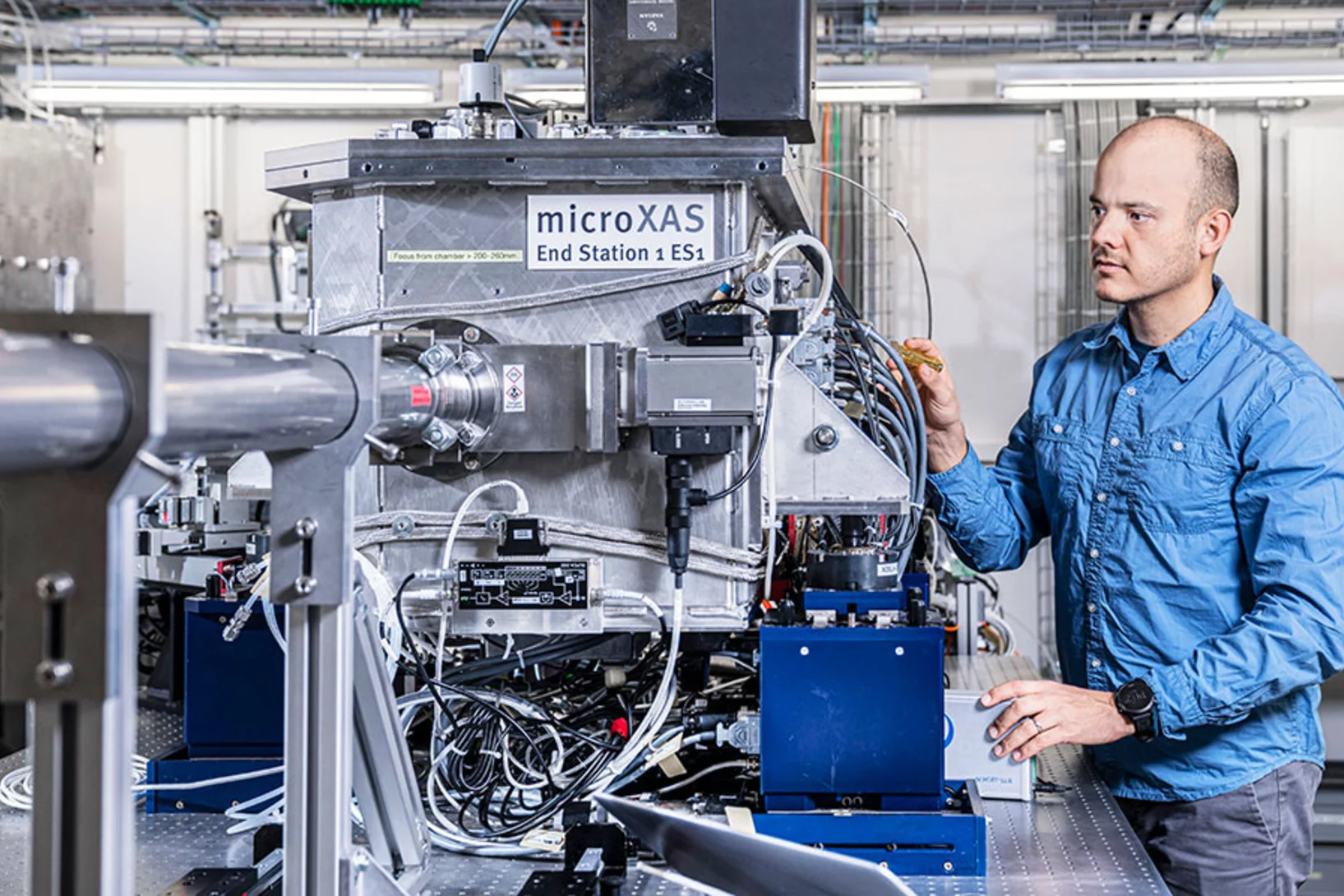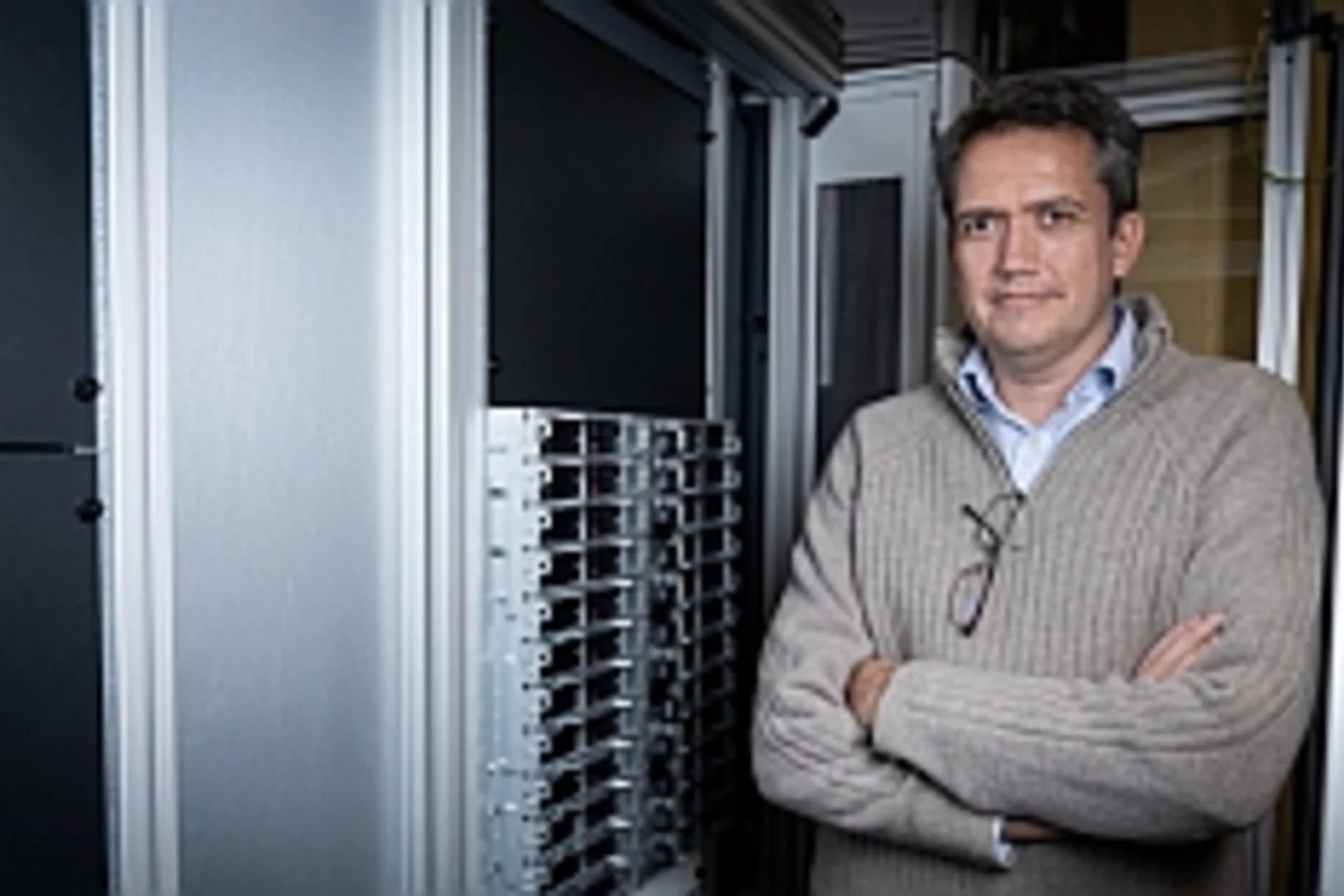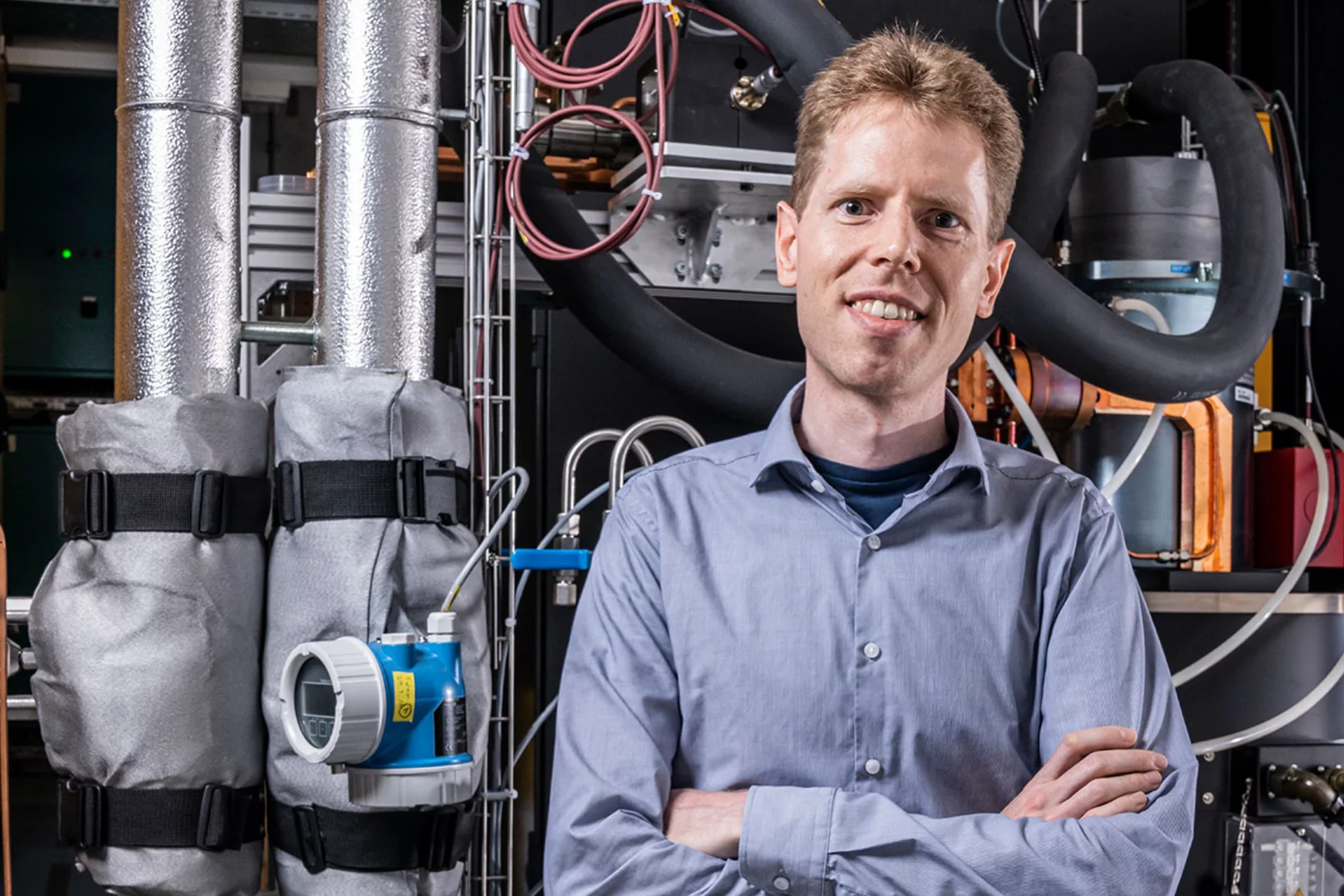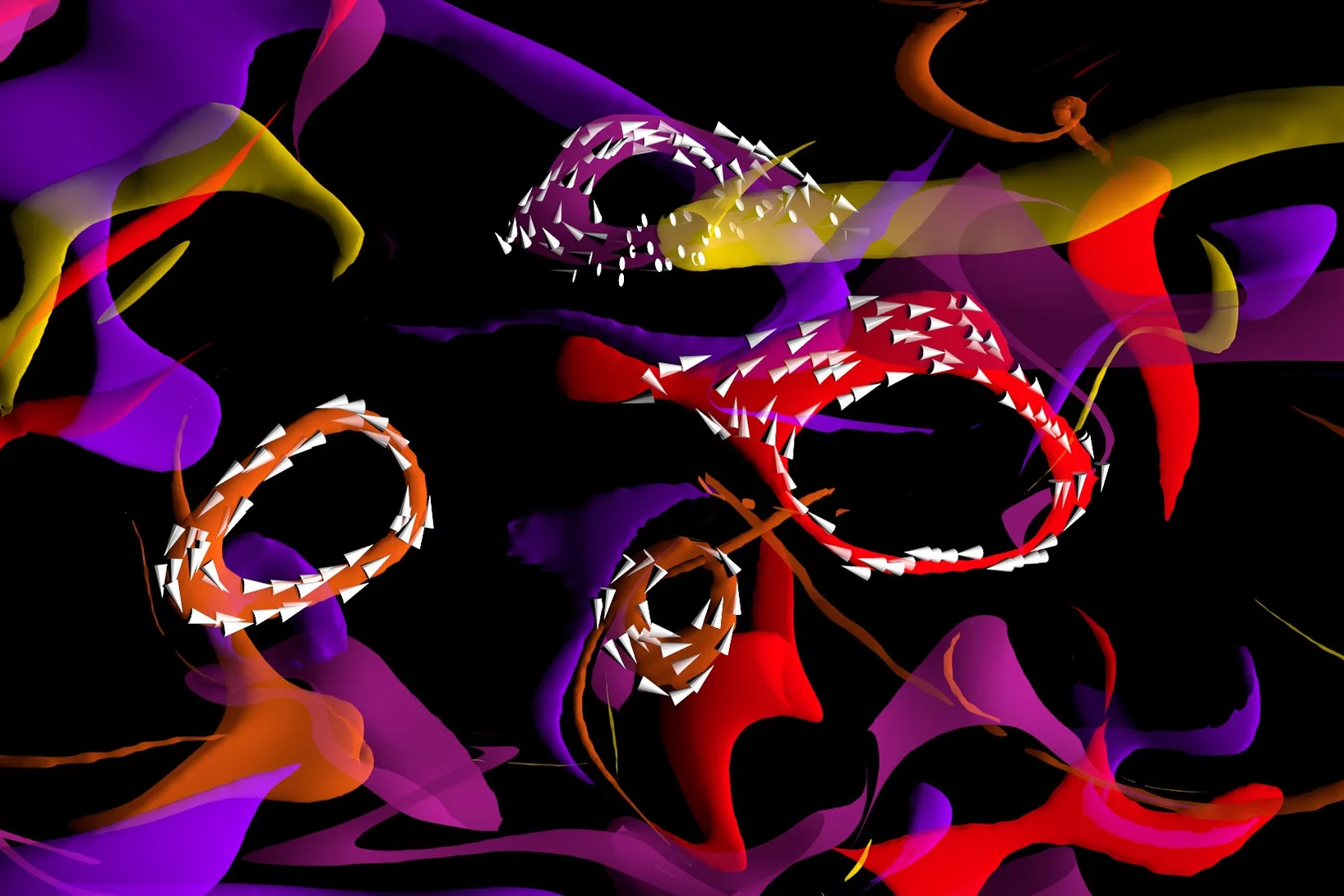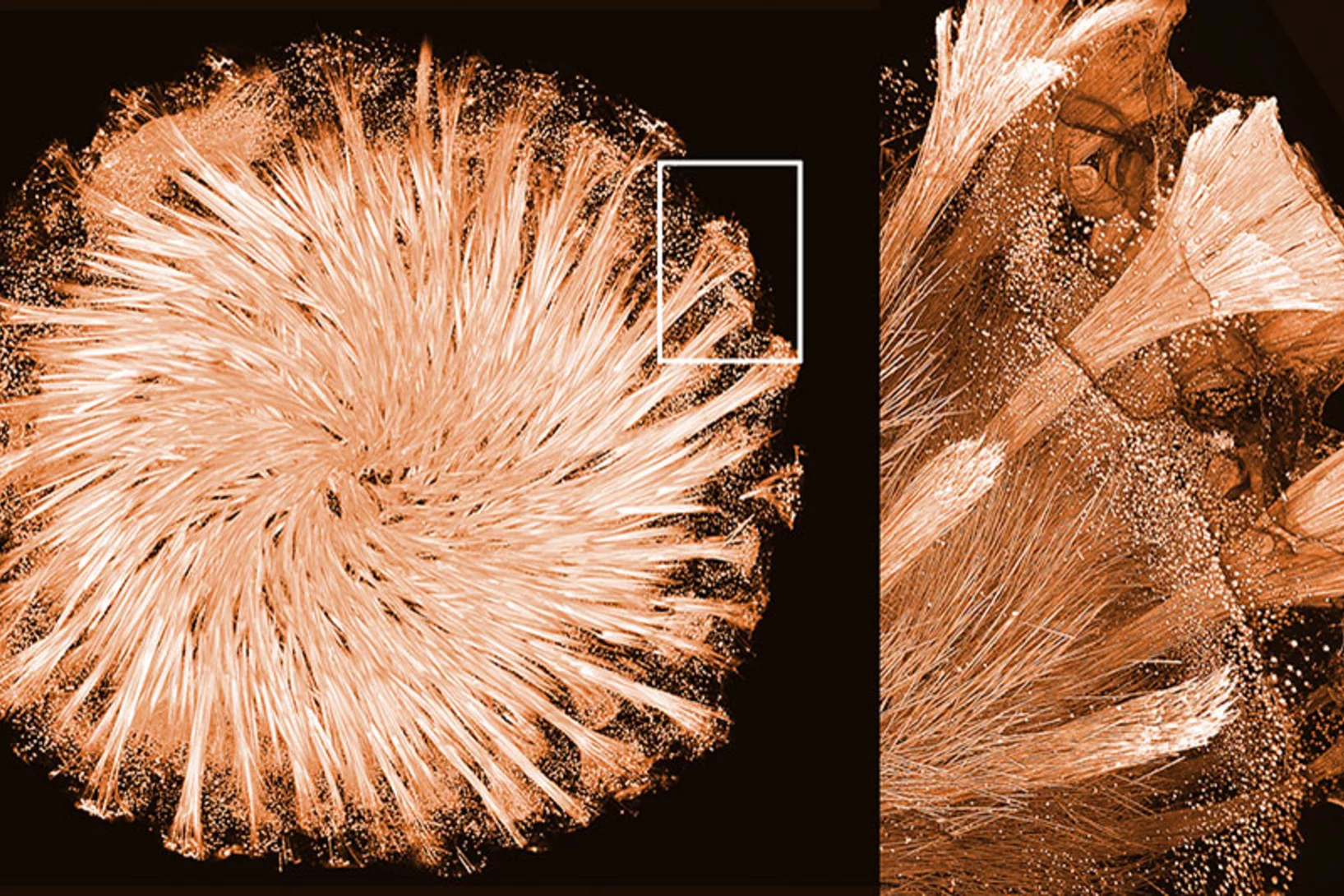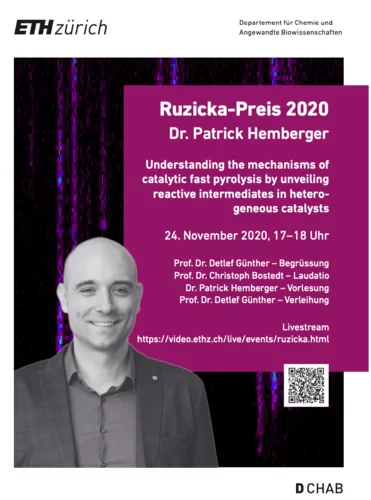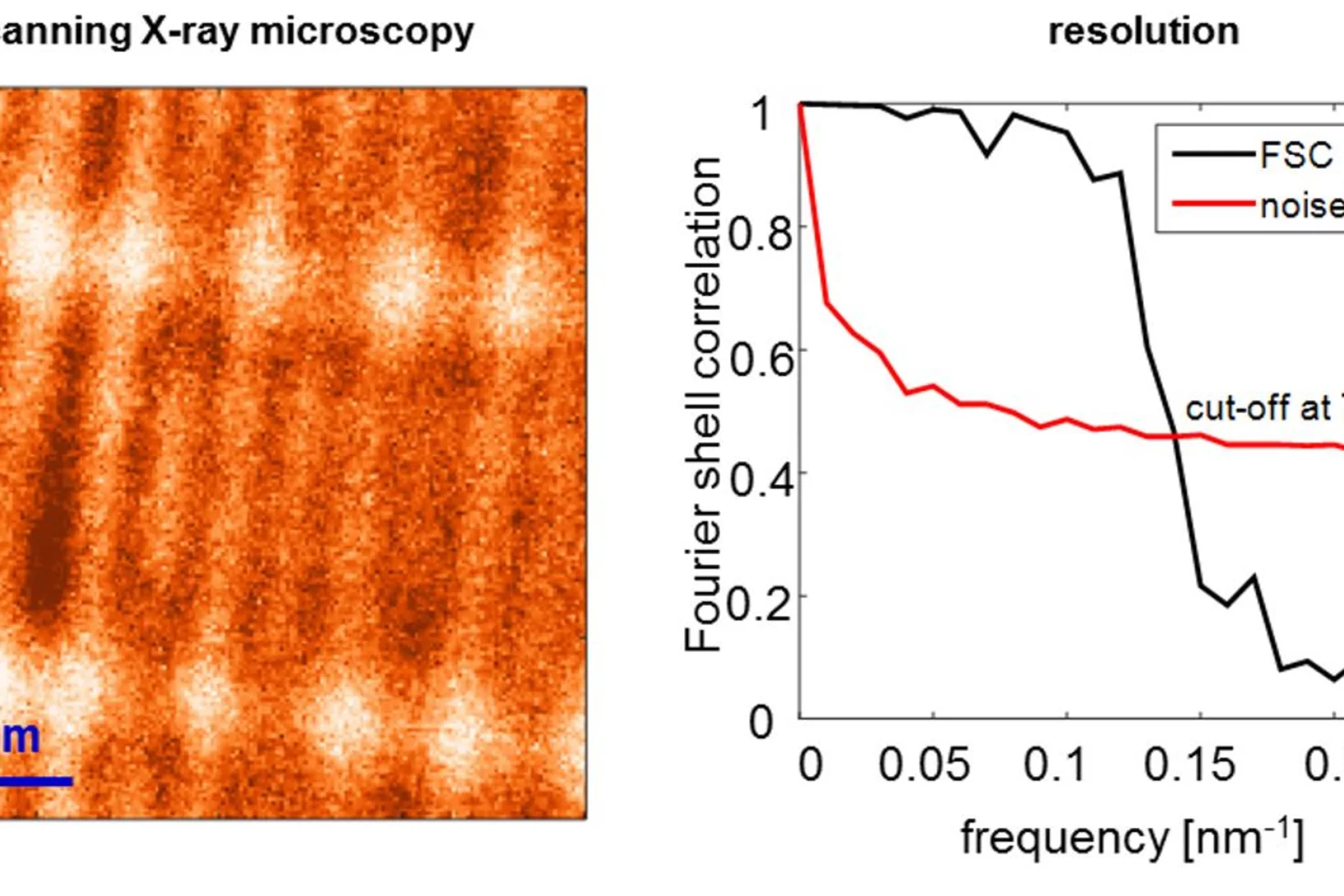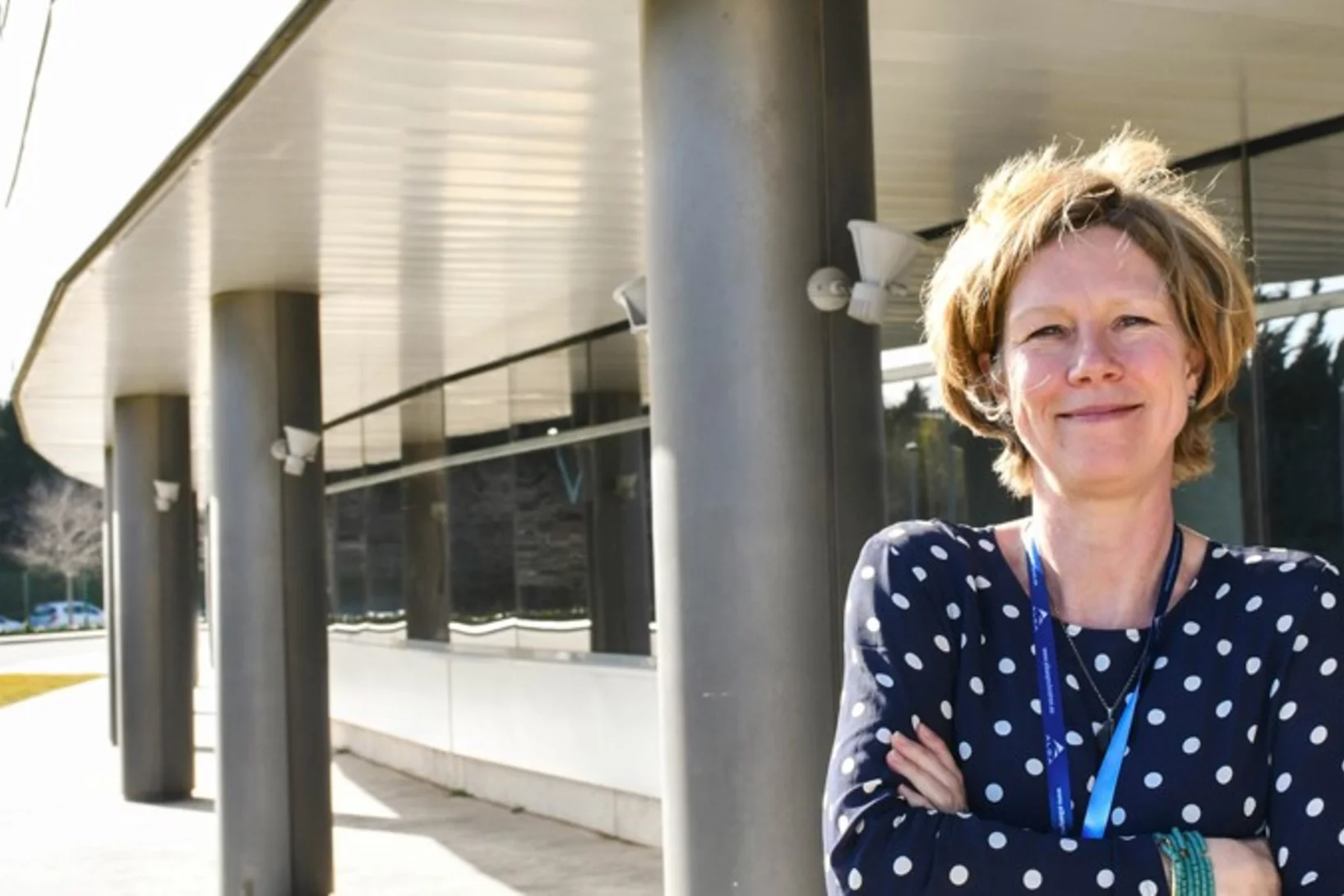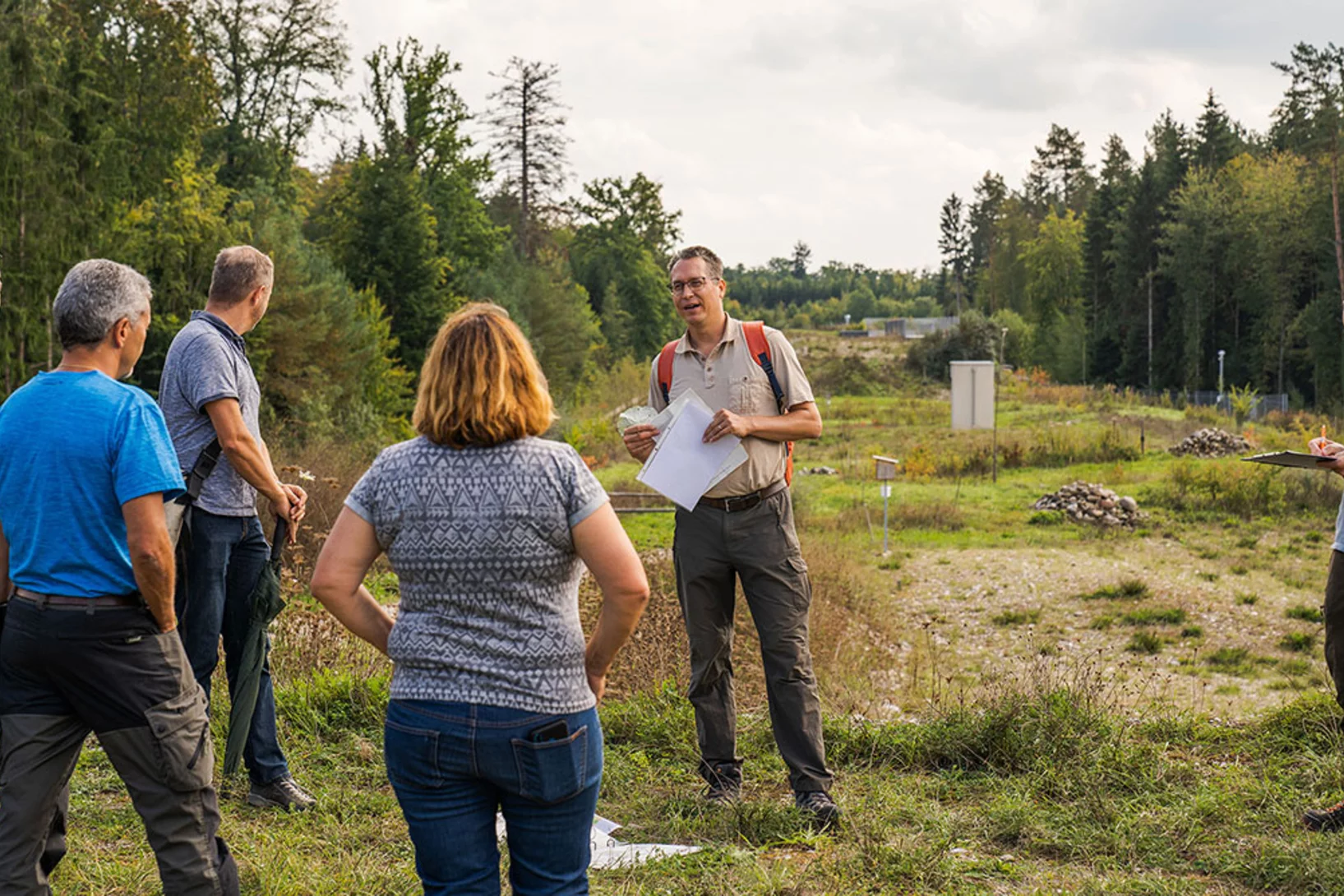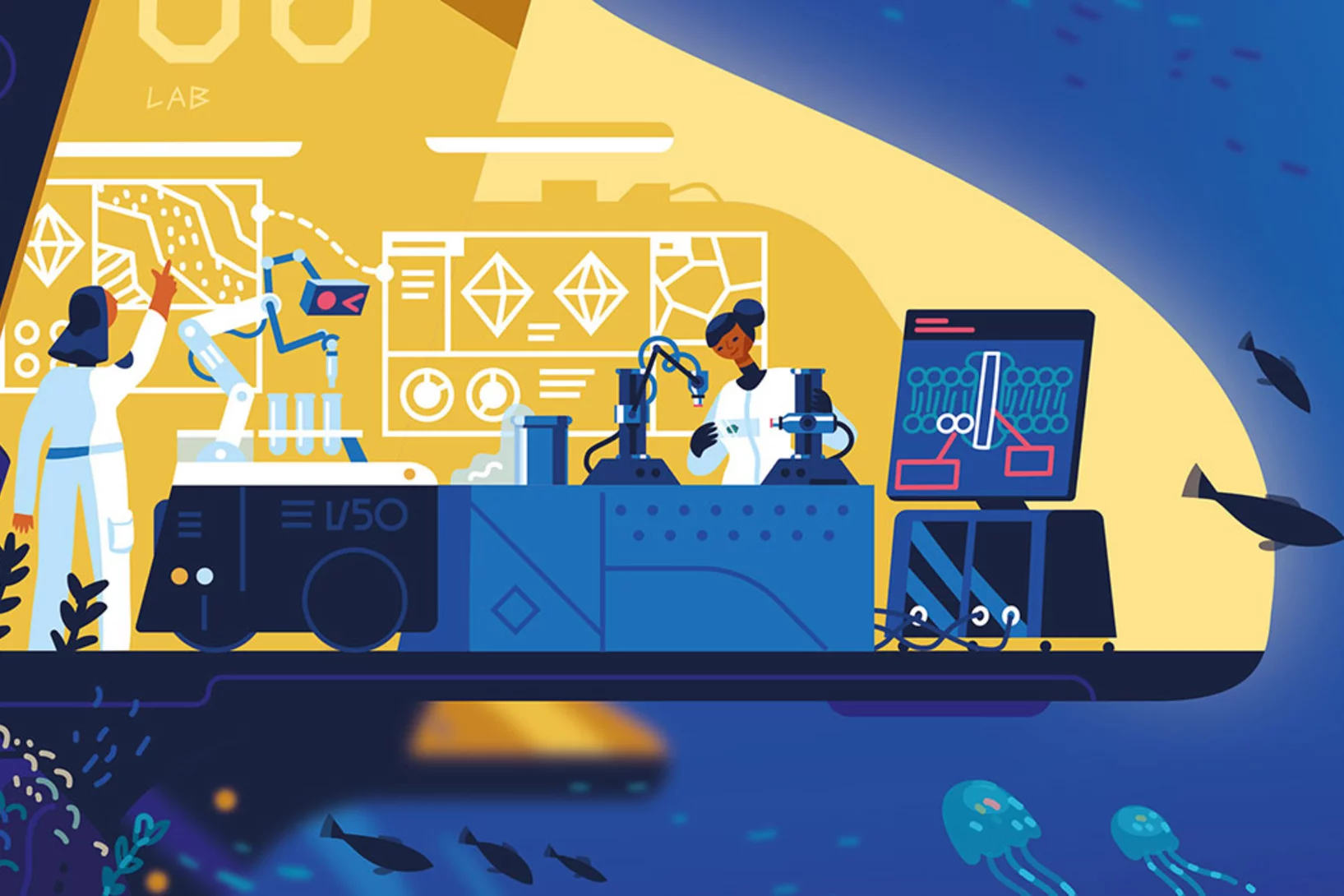A "magical" power with major impact
Microrobots, materials with shape memory, and better particle accelerators are made possible through the exploration of magnetism at PSI.
Quantifying oriented myelin in mouse and human brain
Myelin 'insulates' our neurons enabling fast signal transduction in our brain. Myelin levels, integrity, and neuron orientations are important determinants of brain development and disease. Small-angle X-ray scattering tensor tomography (SAXS-TT) is a promising technique for non-destructive, stain-free imaging of brain samples, enabling quantitative studies of myelination and neuron orientations, i.e. of nano-scale properties imaged over centimeter-sized samples.
No rose-coloured glasses here
Light is essential for life, and for researchers it is also a wonderful tool to better understand the structure of materials.
How remdesivir works against the coronavirus
Researchers at Goethe University Frankfurt, in cooperation with the PSI have probably discovered another, previously unknown mechanism of action of the antiviral remdesivir.
Cell cytoskeleton as target for new active agents
Using a combination of computer simulations and laboratory experiments, PSI researchers have identified new binding sites for active agents on the vital protein tubulin.
Deep evolutionary origins of the human smile
Detailed characterization of the tooth and jaw structure and development among shark ancestors by synchrotron based X-ray tomographic microscopy at TOMCAT led an international team of researchers from the Naturalis Biodiversity Center in Leiden and the University of Bristol to the discovery that while teeth evolved once, complex dentitions have been gained and lost many times in evolutionary history.
"The goal is an experimental quantum computer in the canton of Aargau"
ETH Zurich and PSI are jointly opening a Quantum Computing Hub. An interview with Gabriel Aeppli and Christian Rüegg about the new research centre.
ETH Zurich and PSI found Quantum Computing Hub
ETH Zurich and the Paul Scherrer Institute PSI are opening a joint centre for the development of quantum computers. The aim is to advance the realisation of quantum computers based on both ion traps and superconducting devices.
Uniquely sharp X-ray view
A new PSI method allows quantum-physical research on materials with the aid of X-ray lasers.
Compact and high-performance, like a Swiss Army knife
The X-ray free-electron laser SwissFEL really is as high-performance and versatile as planned.
New class of substances for REDOX chemistry
The compounds known as ‘pyrazinacenes’ are simple, stable compounds that consist of a series of connected nitrogen-containing carbon rings. They are suitable for applications in electrochemistry or synthesis, as the researchers describe in the science journal Communications Chemistry. They were first designed, synthesized and chemically characterized in solution by the Hill team and carefully investigated by Scanning Tunneling Microscopy and Surface Chemical Analysis. The compounds have been shown to reversibly release and accept electrons and arrange themselves differently depending on the oxidation state. Interestingly, the oxidation and reduction reactions of the pyrazinacenes are not only affected by a chemical impulse, but can also be stimulated by light so they can be considered photo-redox active.
Safely stored for a million years
Switzerland plans to construct a deep repository for its radioactive waste. There are three potential locations, and data obtained by PSI researchers can aid in selection of the best one.
HERCULES SCHOOL 2021 AT PSI
During the week of March 15 – 19, we had the pleasure to welcome 20 international PhD students, PostDocs and assistant professors at PSI, taking part in the first virtual HERCULES SCHOOL on Neutrons & Synchrotron Radiation.
Insights into the world’s oldest pile carpet
High-resolution XRF imaging of the specific metal distribution within wool fibers at the PHOENIX beamline gives insights into traditional oriental dyeing procedures.
Forschung zu Covid-19 am Paul Scherrer Institut
Während viele Bereiche des Lebens eingeschränkt sind, bleiben wichtige Forschungsanlagen am PSI in Betrieb.
Watching receptor proteins changing shape
In our bodies, G protein-coupled receptors mediate countless processes. PSI researcher Ramon Guixà talks about how he brings those receptor molecules to life on the computer screen.
New blueprint for more stable quantum computers
PSI researchers have shown how faster and better defined quantum bits can be created. The central elements are magnetic atoms from the class of so-called rare-earth metals, selectively implanted into the crystal lattice of a material.
Clocking the movement of electrons inside an atom
Scientists pioneer an approach called self-referenced streaking, clocking Auger electrons with sub-femtosecond resolution. The breakthrough will unlock the broader potential for attosecond time resolution at X-ray free-electron lasers
PSI equips the Swiss Light Source SLS for the future
Green light for SLS 2.0: The planned upgrade of the Swiss Light Source SLS can proceed; the funding is provided for within the framework of the ERI Dispatch for 2021-2024, which has been approved.
Look Inside a Chemical Reactor
Operando X-ray spectrotomography allows scientists to look inside of functioning chemical reactors. A research team at Karlsruhe Institute of Technology (KIT), at Paul Scherrer Institute PSI and at the European Synchrotron Radiation Facility (ESRF) in France have employed this method successfully.
The librarian of the petabytes
It is necessary to prepare now for the planned upgrade of the Swiss Light Source SLS. In order to do justice to future research, Alun Ashton is estimating the amount of data that future experiments will produce.
Milestone for the second beamline of SwissFEL
At the X-ray free-electron laser SwissFEL of the Paul Scherrer Institute PSI, the second beamline is currently being put into operation. With Athos, researchers want to understand how catalysts work or how biomolecules cause hereditary diseases.
Magnetic vortices come full circle
The first experimental observation of three-dimensional magnetic ‘vortex rings’ provides fundamental insight into intricate nanoscale structures inside bulk magnets, and offers fresh perspectives for magnetic devices.
Scientists determine the structure of glass-shaping protein in sponges
Measurements at the Swiss Light Source SLS have helped to understand how the only known natural protein-mineral crystal is formed. It is part of the fascinating glass skeleton of sponges.
Ruzicka Prize
The Ružička Prize 2020 goes to Dr. Patrick Hemberger (PSI) for his research on understanding the mechanisms of catalytic fast pyrolysis by unveiling reactive intermediates in heterogeneous catalysts.
World Record: 7 nm Resolution in Scanning Soft X-ray Microscopy
During the past decade, scientists have put high effort to achieve sub-10 nm resolution in X-ray microscopy. Recent developments in high-resolution lithography-based diffractive optics, combined with the extreme stability and precision of the PolLux and HERMES scanning X-ray microscopes, resulted now in a so far unreached resolution of seven nanometers in scanning soft X-ray microscopy. Utilizing this highly precise microscopy technique with the X-ray magnetic circular dichroism effect, dimensionality effects in an ensemble of interacting magnetic nanoparticles can be revealed.
BEATS Project
Mirjam van Daalen, chair of the BEATS Steering Committee
COVID-19 - travel assistance websites launched
The Bio Nano spinout of Prof. Aeppli has launched new travel assistance websites that provide continually updated information on restrictions such as multi-day quarantines imposed on travel between countries, together with the latest pandemic predictions so that travellers can make informed decisions.
SwissFEL: a perfect habitat for the black mortar bee
For the construction of the SwissFEL facility in 2013, around five hectares of forest were cleared and transformed into a new habitat for flora and fauna. Biologists and forest engineers have now assessed the results of the renaturization project and are excited about the progress to date.
Wait and see, and grow crystals
At PSI, researchers decipher the structure of the proteins in bacteria and viruses. This knowledge can aid, for example, in the development of drugs against infectious diseases. But before the investigation can begin, an extremely tricky problem has to be solved: the crystallisation of the molecules.
